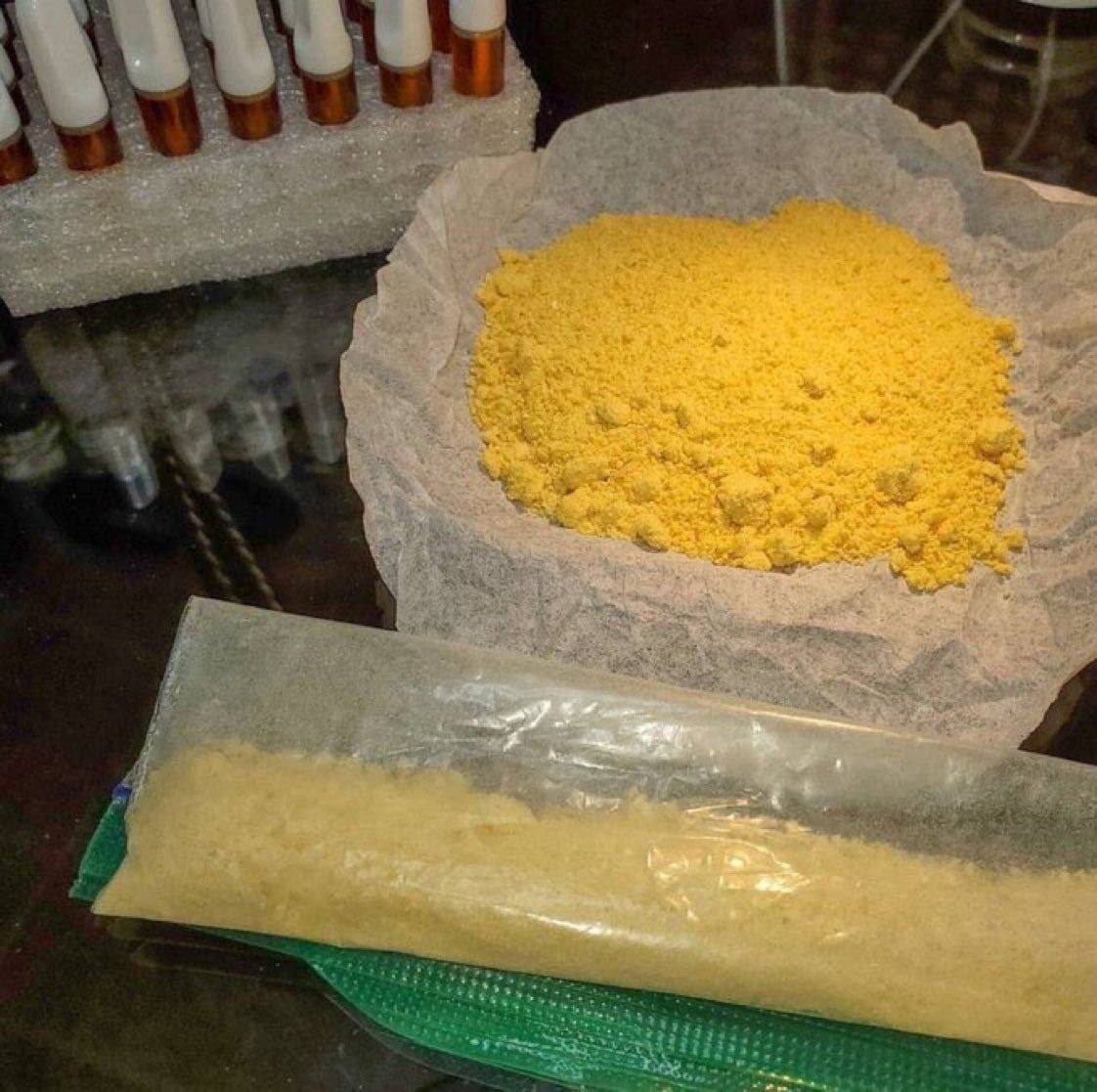5F MDMB 2201
Price range: $165.00 through $750.00
Description
5F-MDMB-2201: A Deep Dive into a Potent Synthetic Cannabinoid
Introduction
5F MDMB 2201 is a synthetic cannabinoid that has become increasingly popular in research settings due to its high potency and strong effects on the endocannabinoid system. As a member of the indole-3-carboxamide family, 5F-MDMB-2201 is known for its ability to mimic the effects of natural cannabinoids like THC, but with much greater intensity. In this article, we’ll explore what 5F-MDMB-2201 is, its chemical structure, potential uses in research, safety considerations, and its legal status.
What is 5F MDMB 2201
5F-MDMB-2201, also known as 5F-MMB-PICA, is a synthetic cannabinoid that binds to cannabinoid receptors in the brain and body, particularly CB1 and CB2 receptors. This compound is part of a class of chemicals designed to replicate the effects of naturally occurring cannabinoids, but with enhanced potency. It is primarily used for research purposes to study the effects of synthetic cannabinoids on the endocannabinoid system and to explore potential therapeutic applications.
Key Features and Properties of 5F-MDMB-2201
- High Potency: It is significantly more potent than naturally occurring cannabinoids like THC, making it a powerful tool for research. Even small doses can produce strong effects, which is why it’s often used in studies exploring cannabinoid receptor activity.
- Chemical Structure: 5F MDMB 2201 belongs to the indole-based synthetic cannabinoids, characterized by a 5-fluoropentyl chain. This structure contributes to its high binding affinity for cannabinoid receptors, particularly CB1, which is responsible for the psychoactive effects.
- Research Applications: This compound is mainly used in scientific research to understand how synthetic cannabinoids interact with the endocannabinoid system and to evaluate their potential therapeutic effects or risks.
- Legal Status: The legal status of 5F MDMB 2201 varies by country and region, with many jurisdictions classifying it as a controlled substance due to its potency and potential for misuse.
How 5F-MDMB-2201 Works
5F-MDMB-2201 exerts its effects by binding to the cannabinoid receptors in the endocannabinoid system. These receptors, particularly CB1 and CB2, play a crucial role in regulating various physiological processes, including mood, appetite, pain sensation, and immune response. Because of its high affinity for these receptors, 5F-MDMB-2201 can produce effects that are much stronger and longer-lasting than those of natural cannabinoids like THC.
- CB1 Receptors: Located primarily in the brain, CB1 receptors are responsible for the psychoactive effects of cannabinoids. 5F-MDMB-2201’s strong binding to these receptors can lead to intense mental and physical effects.
- CB2 Receptors: Found mainly in the immune system and peripheral organs, CB2 receptors are associated with anti-inflammatory effects. The interaction of 5F-MDMB-2201 with these receptors may influence immune response and inflammation.
Potential Uses and Applications
While 5F-MDMB-2201 is not intended for human consumption, it is widely used in research settings to explore a variety of topics related to cannabinoid pharmacology, including:
- Pharmacokinetics: Research on 5F-MDMB-2201 helps scientists understand how synthetic cannabinoids are absorbed, metabolized, and excreted in the body, providing insights into their potential therapeutic uses or risks.
- Therapeutic Potential: Studies investigate the possible therapeutic benefits of synthetic cannabinoids, such as their role in pain management, anti-inflammatory effects, and neuroprotection.
- Toxicology: Understanding the toxicity of 5F-MDMB-2201 is crucial for evaluating the safety of synthetic cannabinoids and preventing adverse effects in both research and potential clinical applications.
Safety and Precautions
Due to the high potency of 5F-MDMB-2201, it is essential to handle this compound with extreme caution:
- Research-Only Use: 5F-MDMB-2201 should only be used in controlled research environments and is not intended for recreational use or human consumption.
- Proper Handling: Researchers must use appropriate safety equipment and follow strict protocols to avoid accidental exposure or contamination.
- Health Risks: Misuse or improper handling of 5F-MDMB-2201 can lead to severe health risks, including intense psychoactive effects, anxiety, hallucinations, and cardiovascular issues.
- Legal Considerations: Ensure compliance with local and international regulations regarding the use, possession, and distribution of synthetic cannabinoids like 5F-MDMB-2201.
Legal Status of 5F-MDMB-2201
The legal status of 5F-MDMB-2201 varies widely depending on the region. In many countries, it is classified as a controlled substance due to its potential for abuse and the risks associated with its use. Researchers must be aware of the legal framework governing synthetic cannabinoids in their area to ensure compliance and avoid legal complications.
Conclusion
5F-MDMB-2201 is a powerful synthetic cannabinoid that plays a significant role in research focused on the endocannabinoid system and the effects of cannabinoids on the body. Its high potency and strong binding affinity to cannabinoid receptors make it a valuable tool for studying both the therapeutic potential and risks of synthetic cannabinoids. However, due to its potency and potential health risks, 5F-MDMB-2201 should only be handled by trained professionals in a controlled research environment. As research on synthetic cannabinoids continues, compounds like 5F-MDMB-2201 will provide essential insights into the complex interactions between cannabinoids and the human body.
Additional information
| choose an option | 10g, 25g, 50g, 100g |
|---|







Reviews
There are no reviews yet.